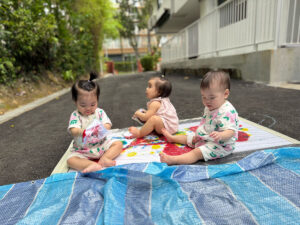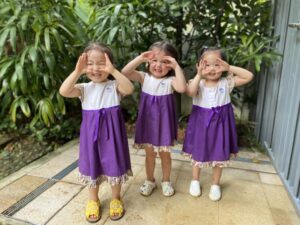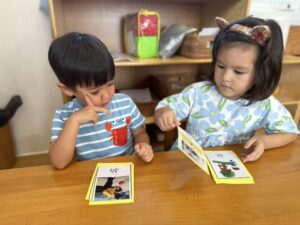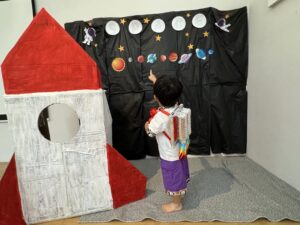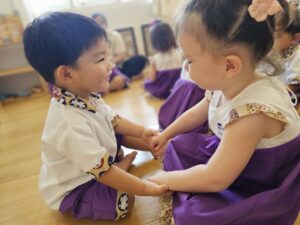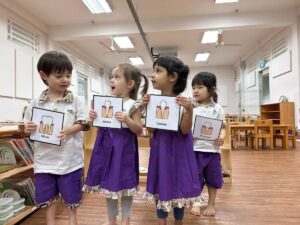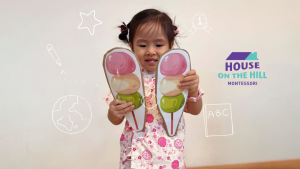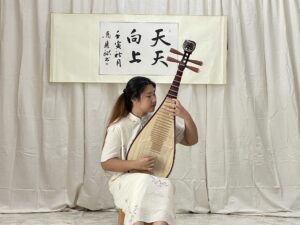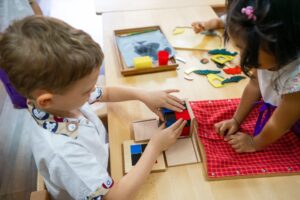
How to Help Preschoolers Foster Good Relationships with Their Siblings
At House on the Hill, we believe that fostering sibling relationships are just as essential to a child’s development as learning to count or recognise letters. Siblings are a child’s first friends, role models, and lifelong companions. The preschool years offer the perfect time to nurture empathy, respect, and cooperation among siblings. From a Montessori perspective, a good relationship with siblings goes beyond “getting along.” It is about emotional development—helping children value each other’s uniqueness, collaborate meaningfully, and resolve differences with care. With the right environment and guidance, children learn how to establish positive, lifelong bonds. Recognising Each Child’s Uniqueness In Montessori classrooms, every child is treated as an individual, even in a mixed-age group. The same applies at home: valuing each child’s strengths, interests, and pace of development reduces unnecessary comparison and rivalry.Instead, acknowledge each child’s unique qualities: “You are so creative with your building.” “I love the way you explain things.” This builds confidence and helps children value their differences, making sibling relationships more cooperative and harmonious. Creating Opportunities for Positive Interaction Montessori education uses shared, purposeful activities to encourage cooperation among children. This can be easily recreated at home by incorporating Practical Life tasks that siblings can accomplish together: Preparing snacks in the kitchen Watering plants or caring for a pet Building a block structure or puzzle as a team These activities result in shared successes and deeper bonds, key to fostering sibling relationships. Supporting Healthy Communication and Self-Expression A well-prepared Montessori environment often includes a safe space, such as a peace table, where children can resolve disagreements respectfully. At home, you can create a calm corner for siblings to share their feelings and listen to one another. Introducing simple tools, like a talking object, allows each child to speak without interruption. This practice nurtures grace and courtesy, fosters trust and understanding, and builds patience—key elements in cultivating strong and positive sibling relationships. Managing Sibling Rivalry the Montessori Way Encountering conflicts is completely natural in any relationship. In Montessori, we see managing sibling rivalry as a valuable learning opportunity. Instead of stepping in to assign blame, guide children in working through the issue together: Stay neutral by acknowledging each perspective without taking sides. Ask guiding questions such as “What happened?” and “What can we do to make this better?” Encourage problem-solving by letting siblings suggest their own solutions. Over time, children will begin handling disagreements with greater independence and emotional maturity. Encouraging Empathy and Cooperation In mixed-age Montessori classrooms, older children often guide younger ones, while younger children learn by observing. You can recreate this dynamic at home by giving siblings similar opportunities. This includes inviting an older sibling to teach a younger one how to pour water, zip a jacket, or plant seeds, and encouraging younger ones to express appreciation: “Thank you for showing me how.” These small, thoughtful acts strengthen empathy and reinforce the cooperative spirit essential to fostering sibling relationships. Our Holistic Approach at House on the Hill At House on the Hill, our focus on building strong relationships extends beyond the classroom and into everyday family life. Consistency between home and school deepens the values we model, while parents can support connection through regular family activities, one-on-one time with each child, and engaging in respectful communication in their own interactions. Within the preschool, children practise these same principles through Practical Life activities, Grace and Courtesy lessons, and conflict resolution at the peace table. By combining Montessori’s emphasis on independence, empathy, and community within a warm and nurturing environment, we help children internalise healthy relationship skills, manage sibling rivalry with compassion, and ultimately grow into kind and understanding citizens of the world. Curious to see how our Montessori approach nurtures strong sibling relationships and social skills? Book a tour with us or learn more about the House on the Hill experience.


